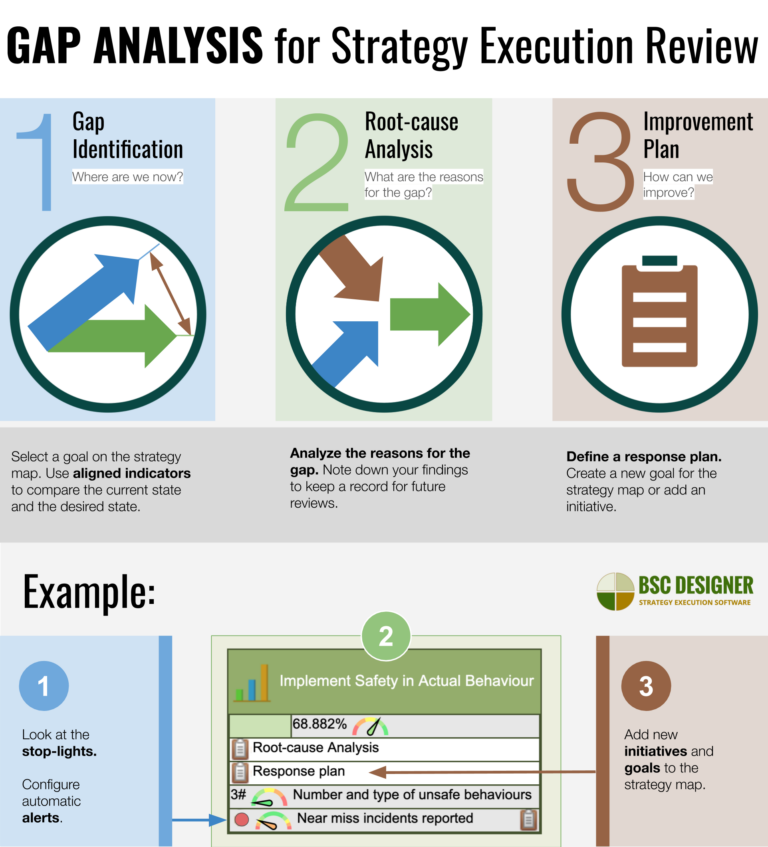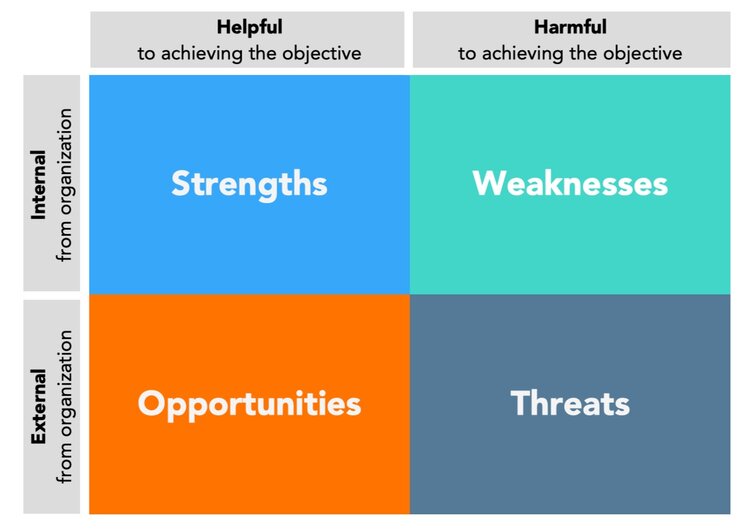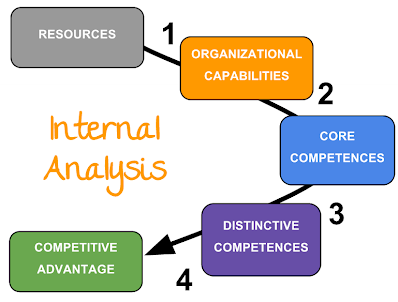
Internal or External Analysis? | What Is It and How to Conduct One
Last update: 3 January 2023 at 01:53 pm
Have you ever wondered the question ‘what is internal and external analysis?‘
What about why it’s so important for your business? If so, then this article will give you a step-by-step guide to conducting an internal analysis and explain why it’s so important.
What Is An Internal Analysis?
Internal analysis is a key strategic evaluation to smart business growth.
The analysis examines and assesses your organization’s competitive advantage, competencies, and resources.
This provides insight into areas for growth for your organization. It all comes down to what affects your organization.
Both internal and external factors affect your organization. Your business needs to identify your organization’s core competencies. By doing this, you’ll know where you need to focus on reaching your target market.
An internal analysis will examine the internal environment of your organization. It assesses its competitive advantages, competencies, capabilities, and resources. Your cost position is also determined in internal analysis.
As mentioned earlier, external and internal factors affect your organization. Your internal environment is the resources and abilities of your organization. These factors are measurable and include areas like marketing, production, and finance.
An external analysis should go with an internal one. Why is this an effective strategy? The external environment includes your customer insights, competitors, and the environment. With that information, you can match your strengths to external opportunities in a new market.
By performing a thorough internal analysis, you understand your organization’s strengths and weaknesses. This knowledge will tell you where you are excelling and where your deficits are.
Internal analysis is the first step your business takes before it will develop strategies.
Why Should You Do An Internal Analysis?
You may be wondering, what is included in an internal analysis?
There are things you need to know about your organization’s competency. Internal analysis is about exploring things like competitive viability. What makes internal analysis important is the information gathered. This information helps develop strategic planning objectives that grow and sustain your business.
Internal analysis is all about that data and identifying opportunities. The more information you have about business opportunities, the easier it is to make a strategic plan. Plans improve things across your organization, like your business’s ability to manage resources.
Business Analysis Tools You Should Be Using
How do you go about identifying strengths and possible threats to your business?
Organizational weaknesses, opportunities, and threats vary across the industry. To become a strong organization, your business should use updated technology systems.
Invest in proprietary technology and frameworks that help conduct an internal analysis. These tools assess your company’s strengths. They also help business managers make a difference in your organization’s environment.
Let’s take a look at a few business analysis tools.
Gap Analysis and Strategy Evaluation
One of the benefits of conducting an internal analysis is identifying gaps like performance deficits. A Gap Analysis will compare your current state to your anticipated future state.
Identifying if your company functions well or not allows you to adjust business strategies. Your strategies should strengthen identified weaknesses and expand on opportunities.

Compared to a SWOT, GAP analysis is a more targeted approach that can fine-tune a single process.
Strategy Evaluation helps your business analyze the implementation of its strategic plans. This business analysis is an ongoing task done at regular intervals during implementation.
Look back at your goals and measure how well you achieve them with this business strategy.
Organizational Capacity Assessment Tool and VRIO Analysis
The OCAT is for non-profit organizations to assess the internal environment. This framework will help test and improve how a non-profit organization operates.
Some areas the OCAT measures here are funding, advocacy, aspirations, and business processes.
VRIO analysis framework assesses an organization’s internal environment. It categorizes resources based on value to the organization.
VRIO stands for Value, Rareness, Imitability, and Organization. This business strategy will highlight a company’s strengths. Optimizing this particular strength gives a competitive advantage in the industry market.
Value works like this: If a resource has value to a customer, you want to support it. If there is no value, you need to reassess your strategy. When it comes to rarity, you need to have something unique to your company. If not, you have replaceable assets.
Imitability adds a competitive advantage by assessing how expensive it is to duplicate your resources or not. The organization is all about your company structure and processes.
Do your structure and processes leverage your resources? If not, you have untapped potential your company can work on.
SWOT Analysis And Core Competencies Analysis
You may have heard of a SWOT analysis framework before. Is SWOT an internal analysis?
SWOT internal analysis is one of the most used internal analysis tools, and it gained popularity because of its simplicity.
SWOT analysis stands for strengths, weaknesses, opportunities, and threats. The SWOT matrix helps visualize both external and internal factors. External things are opportunities and threats, while intellectual and human resources are internal.

We recently published a Tesla SWOT analysis you can use as a reference.
Weaknesses can stand in the way of your organization and success. It can include things like poor communication, old-fashioned processes, or a bad reputation. Threats don’t affect the company immediately but rather down the line. Things like trends and competitor popularity are threats.
This internal analysis helps organize these things in a simple grid format that allows you to focus on what will help grow your business. An effective SWOT analysis requires both founders and leaders of your organization to take part.
One of the ways to create competitive advantages for your business is to create an effective strategy before they do.
Core Competencies Analysis works on internal analyses to help provide you with a framework that helps you focus on being your best.
How To Conduct An Internal Analysis
Ok, so you now know what an internal analysis is and how it can help you identify strengths and weaknesses in business units. You have an idea of what tool for business analysis you should use, but what are the major steps in internal analysis?
Establish Your Goal And Choose A Framework
You need to know the goal of your analysis. So ask yourself these questions:
- Why am I conducting this analysis?
- Do I want to recognize internal strengths or determine weaknesses?
- Should I identify external threats?
- Are my quality control standards meeting my needs?
Now that you have your goal let’s think back to the business tools we talked about earlier. The type of framework you choose here depends on the answer to step one.
Choose the one that meets your needs and will help you achieve your goals.
Each of the frameworks has specific benefits, but the SWOT is the best one to start with.
Research and Parse Your Data
Research is the first step in any analysis process. Conduct research like employee evaluations or use statistics and trends on market share to get your data. Once you have your data, you can use your framework to organize it.
If you focus on your competencies and what your company does well, you want to use SWOT. Compile data surrounding that framework and go over it. You may want to leverage strengths against potential threats in the next steps.
Compare And Apply
The final steps in conducting an internal analysis will have you compare your original priorities to your data.
Taking that moment to realign your original priorities with what the data says is important to creating a strategy.
Assess possible threats to your goal and create and apply strategies based on data. This strategy should support the research and framework that you set up in the previous steps.
Gain Competitive Advantage With Internal Analyses
There are many benefits to conducting research on your business, but let’s talk about the biggest one: a competitive edge. Rival businesses also use effective internal analysis strategies.
Conducting an internal analysis will give your business a competitive edge.
Your strengths are your people, technology, and your market share. A business that has high intellectual human capital is a competitive one.
Your organization needs valuable knowledge about your strengths to know how to use them best. The best way to do that is with an internal analysis.
Knowing ahead of time where your potential pain points are and reviewing buyer personas are part of a successful marketing campaign. By researching and using a framework that supports your campaign, your company will generate effective marketing and you can even do so with a qualified digital marketing agency to help you out.
It isn’t enough to talk about strategy. Your business leaders have to follow up to continue addressing your weaknesses. You want to measure your success and see that your plans are working. This process benefits more than the business. It benefits everyone, from employees to customers.
Recognize company strengths and weaknesses in your organization by conducting internal analysis today.






